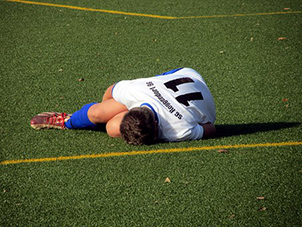Installing a preseason emergency response plan
All public and private schools have an emergency response plan that allows staff and students to respond to an emergency in an organized and safe manner.
 Massachusetts requires that schools to have a medical emergency response plan for injuries on the field. The bills purpose is to promote safer school sports and to raise awareness of the importance of proper planning and preparation to prevent the tragic loss of young lives.
Massachusetts requires that schools to have a medical emergency response plan for injuries on the field. The bills purpose is to promote safer school sports and to raise awareness of the importance of proper planning and preparation to prevent the tragic loss of young lives.
Since then I have had more time to reflect on this concern and I have come to the conclusion that an emergency response plan for preseason practices — as well as ones that take place during predetermined breaks — is an essential component of your practice planning and organization. Many school emergency plans in operation today are put in place with the understanding that the school day is in session and that all school certificated and classified staff are on site.
Unfortunately for schools that follow a traditional calendar, there is a distinct possibility that classes will not be in session and that, other than your coaches and some custodial staff members, there might be very few or perhaps no other certificated or classified staff members on campus during the preseason. Budget-related constraints that are currently prevalent across much of the country have given rise to reductions in staff that makes it even more important for coaches to put a plan in place that allows them to be better prepared to act in an organized and safe manner.
In formulating your plan it is important to take some of these matters under consideration:
- Be sure your coaching staff is current with all required certifications including CPR and first aid.
- Assess the school and practice facility to determine the safest evacuation routes in relationship to where you conduct practice.
- Determine where the safest post evacuation gathering areas are so that you are able to access a safe location where emergency responders can assist your coaching staff. This might include multiple sites depending on the configuration of your facility and surrounding neighborhood.
- Many coaches do not have master keys, so it is important to determine what buildings you will access and what gates you will open in these situations. As part of our emergency plan, I open all gates that are in close proximity to our practice field so that if an evacuation takes place, our coaches exit without fear that a gate is locked. Some of your coaches, especially walk-on coaches, might not have any keys checked out to them.
- The identity of coaching staff members that have keys and what gates or buildings they will be able to access should be known to all.
- If you are fortunate to have one, make certain your trainer is included in the planning process as that person is a valuable resource, not to mention he or she might have some athletes under supervision at that time.
At our school site, we are fortunate to have a fire station right across the street and this, of course, helps us get an emergency response team to our facility very quickly. Depending on your location, you might want to consider consulting with public officials as you develop a plan for your school site.
Quite often there are other teams that also will be practicing prior to the start of the academic school year and some may be using the same facility. For example, the cross country team might be using the track while football practice is in session. At our site, besides cross country, girls volleyball and girls tennis and boys water polo also are in season. Your football staff should be aware that they might have to include other athletes in the evacuation process.
As a coach, it’s your responsibility to have all your athletes contact information with you at all times. Knowing who is in attendance at practice is also important.
You must remember that prior to the start of classes you are not taking a traditional roll call and inputting the data in the schools electronic database. In such situations, the head coach is the captain of the ship and you should be the last one to go to a predetermined evacuation area.
These are just a few of the many things one needs to consider when addressing this concern. Each coach has to take into account contingencies that are unique to their site. In the summer training manual that I provide to our student-athletes I always include the following reminder:
It’s what you do now, when you don’t have to do anything, that makes you what you want to be when it’s too late to do anything about it.
This applies to both your preparation for what you will be doing on the field on game day and what you might have to do off the playing field should an emergency evacuation situation arise.





